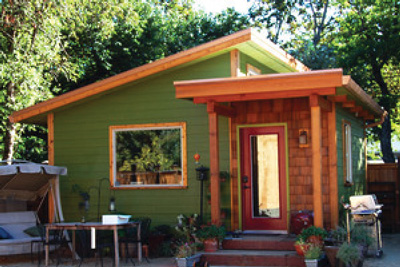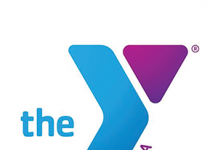 For many people, home ownership is the foundation of the American dream: Buying a starter home, building equity, and moving up in the world. For the formerly homeless, the underemployed, and other low-income individuals, this dream is often out of reach.
For many people, home ownership is the foundation of the American dream: Buying a starter home, building equity, and moving up in the world. For the formerly homeless, the underemployed, and other low-income individuals, this dream is often out of reach.
But Cass Community Social Services — a Detroit-based agency that works to address poverty by providing programs for food, health, housing, and jobs — hopes to give residents the means to achieve this dream with their new tiny-house development on the northwest side of Detroit.
Tiny houses — sometimes as small as 100 square feet, or three queen size mattresses — have become a big deal among people who want to downsize their lives (or are obsessed with HGTV shows like Tiny House Nation). But the Rev. Faith Fowler, executive director of Cass Community Social Services, sees tiny houses as more than a trend. For Fowler, tiny houses are a way to provide a financial cushion for those who can’t afford housing, as well as help them climb out of poverty.
“They’ll go from having no asset to all of a sudden owning a house and property, which means they could get a loan,” Fowler says. “They’d have collateral. They can sell it and buy something bigger and better. If they die they can leave it to their children.”
It was this very concept that helped plant the seed for CCSS’ tiny houses. After Fowler’s mother passed away in 2013, she inherited some assets including a cabin, which prompted her to consider how assets are passed through generations and “what it means to a person who is middle class and what it could mean for someone who is poor.”
“If you’re poor, your parents are poor, your siblings are poor — everyone related to you. Which means they can’t help you in a crisis because they don’t have (money) either,” Fowler says. “But if we could set up a system where they could have an asset worth something, we change not only their life, but potentially their family’s life … (The house is) something they can pass on to break the cycle.”
CCSS’ tiny houses will truly be assets worth passing on to future generations. Each of the 25 houses built by the organization will include a bedroom, a security system, a washer and dryer, a kitchen complete with stove and fridge, and an outdoor space such as a deck or patio with room to garden. House exteriors will differ in architectural styles ranging from rustic to contemporary and will be built on 30-by-100-foot plots on the north end of CCSS’ property between the Lodge Freeway Service Drive and Woodrow Wilson.
To date, CCSS has raised more than $700,000 for the construction of the houses. Among the top funders of the project was Ford Motor Fund, which committed $400,000. According to Fowler, the estimated cost to build a 300-square-foot house is about $48,000, which is based on using all professional trades and all purchased materials, but they will be using volunteers whenever possible and donated tile, paint, wood, etc.
According to CCSS, the homes will go to formerly homeless people, senior citizens, college students, and some of the organization’s own staff members. All prospective residents will be low income. At press time, Cass Community Social Services was reviewing applications and planning to select its first residents by the end of August.
Residents who are selected will pay rent to CCSS, which will act as a landlord of sorts for seven years. The organization will cover the costs for the water, insurance, taxes, and security system, and use the “rent money” they collect from residents to pay the bills. In addition to the rent bill, the only other bill for which residents will be responsible is electric, which includes heat.
To qualify, residents would have to show proof of income that they could meet the HUD standard. The structure is set to help ease residents into paying for their homes so that in seven years, they’ll be able to manage owning their home.
Despite the project’s user-friendly design, Fowler knows it’s not the answer for everyone. For those who can make it work, however, getting into some form of stable housing can far outweigh the alternatives.
“If you are in our shelter, you could wait three years for affordable housing,” Fowler says. “That’s a long time … we wanted an immediate answer for people who had very low income but were ready to live on their own.”
The neighborhood surrounding CCSS’ new initiative is striking in its contrasts, but it’s certainly not atypical of other Detroit neighborhoods. Well-maintained homes are juxtaposed against crumbling buildings left to their own devices like churches, stores, and homes. The landscape raises plenty of questions about the city’s homelessness issue at large, but as Fowler walks through CCSS’ own new, mini neighborhood-in-progress, she doesn’t hesitate to answer them.
“How do you repurpose a community” with jobs and housing, she asks. “You start small.”
Watch the progress of CCSS’ tiny-house project at casscommunity.org/tiny-homes-live
|
|
|










